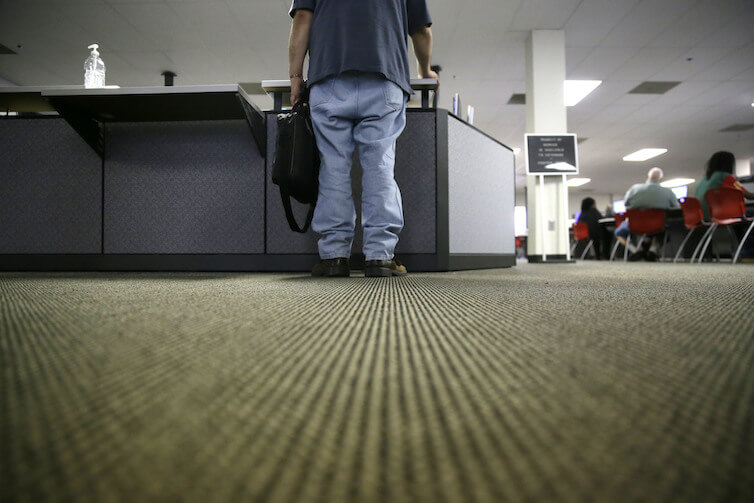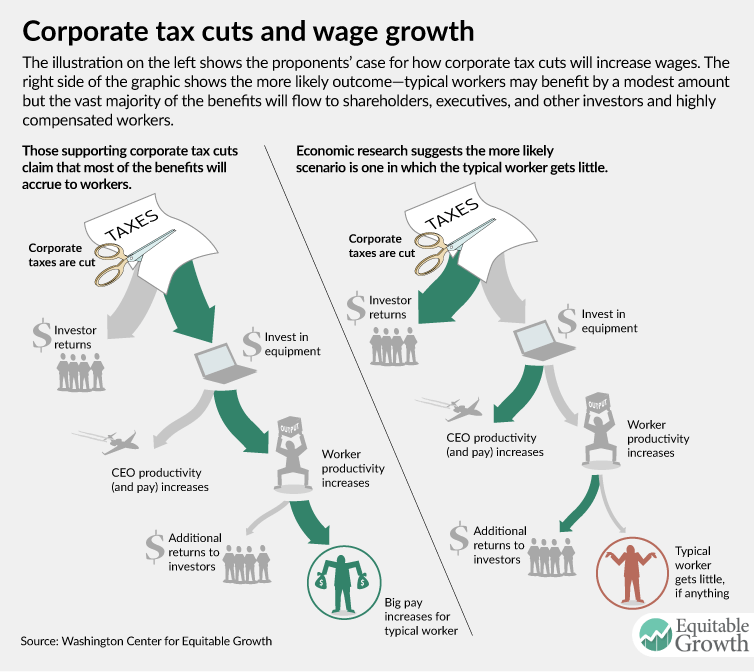
How far into the future will the aftershocks of the Great Recession be felt? According to the National Bureau of Economic Research, the Great Recession began in December 2007, meaning that today marks the beginning of the 10-year anniversary of the historic downturn’s beginning. The deep economic shock that lasted until mid-2009 touched every corner of the United States and shaped the political, cultural, and, of course, economic affairs of the country. But how long will the consequences last?
In economics, this question looms large because the debate about the impact of recessions on the long-run potential of the economy raises questions about how we think about the working of the macroeconomy. In a recent working paper, economist Olivier Blanchard of the Peterson Institute for International Economics takes a look at the “natural rate hypothesis.” This hypothesis was laid out by the famous economist Milton Friedman in his 1968 presidential address to the American Economics Association. Friedman argued that, broadly, monetary policy couldn’t have a long-term impact on the potential of an economy and that policymakers couldn’t rely on using the trade-off between inflation and unemployment in the long-run. The speech was originally quite controversial but now serves as an important idea underlying the models of the economy used by central banks and mainstream macroeconomists.
Blanchard argues that the hypothesis really contains two separate subhypotheses: the independence hypothesis and the accelerationist hypothesis. Either might be true or prove to be false—and the implications for how we think about recessions and responses to them change if either or both don’t hold up.
The independence hypothesis is the idea underlying the concept of a “natural rate of unemployment” or “potential Gross Domestic Product.” This hypothesis claims that the underlying potential of the economy—the number of workers that can be employed or the value of goods and services produced with steady inflation—is fixed by a number of factors such as technology, the availability of capital, and the ease of hiring workers. But the current health of the economy is, under this hypothesis, not a factor that determines how strong the economy can potentially get.
Blanchard, however, finds some evidence that a recession can have an effect on the long-run potential of the economy, particularly when it comes to the labor market. He points, for example, to suggestive evidence in the data and careful research that suggests a weak labor market can push workers out of the labor market and potentially lock them out of future employment. This would mean that a recession can have a persistent effect on the level of unemployment years later.
The second hypothesis involves the trade-off between inflation and the health of the economy, an idea described by the Phillips Curve. The accelerationist hypothesis states that pushing unemployment below its natural rate will result in accelerating inflation. This happens because households and businesses are aware of the current inflation rate and will change their expectations of future inflation a lot if current inflation changes. A stronger economy with more inflation would increase expectations of higher inflation which in turn creates more inflation, and the feedback loop continues on.
But this hypothesis rests on the assumption that consumers and businesses are aware of inflation and find the level of inflation salient to their everyday decisions. This assumption might have held up during the 1970s, when inflation was high enough that people had to think about it, but that’s not true today. Blanchard shows data that consumers don’t change their expectation of inflation with changes in actual inflation, which would undermine the accelerationist story.
The consequences of these hypotheses not holding up are quite important. If the impact of recessions is quite persistent, then the need for countercyclical monetary and fiscal policy during downturns—more money pumping into the economy and more government spending—is much stronger. If the accelerationist view of inflation isn’t correct, then policymakers can do more to push unemployment down without seeing much of a pick-up in inflation.
Blanchard comes to the conclusion that while the natural rate hypothesis doesn’t look good in light of these data and other research, it’s worth holding onto for now. But there’s a clear need for research on these questions that Blanchard mentions many times in the paper. One case in point: Understanding how much the chance of long-term unemployed workers getting a job varies over the business cycle of an economy could help determine the level of persistence of recessions. Conversely, a better understanding of what determines households’ inflation expectations will result in a stronger test of the accelerationist hypothesis.
It’s been almost a decade since the last recession began. Sometime in the future, another one will start, and policymakers will need a better grip on the baseline—whether we’ve actually recovered from the previous recession—and therefore how aggressively they should fight the next downturn. More research in this area will help do just that.


